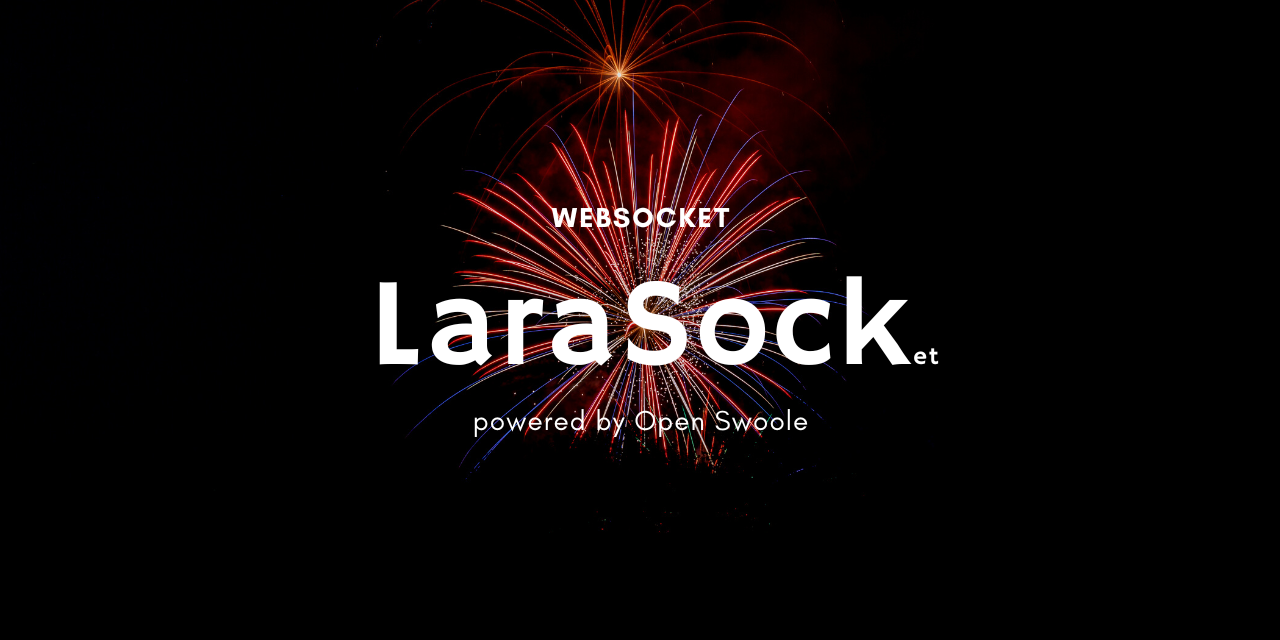hi-folks / lara-sock
WebSocket package for Laravel application, using Open Swoole server
Installs: 14
Dependents: 0
Suggesters: 0
Security: 0
Stars: 25
Watchers: 1
Forks: 1
Open Issues: 1
pkg:composer/hi-folks/lara-sock
Requires
- php: ^8.1|^8.2
- openswoole/core: 22.1.2
Requires (Dev)
- laravel/pint: ^1.4
- nunomaduro/larastan: ^2.0
- openswoole/ide-helper: ~22.0.1
- orchestra/testbench: ^7.0|^8.0
- pestphp/pest: ^1.22|^2
- pestphp/pest-plugin-laravel: ^1.4|^2
- rector/rector: ^0.16
README
This is an early stage (under construction/exploration) work in progress, so currently, the project only implements some of the functionalities you expect. Feel free to share if you want to contribute, providing Pull Request or suggestions. We believe in positive vibes.
Why LaraSock?
Larasock implements a WebSocket Server based on Open Swoole. The final goal is to support the same Application Providers supported by Laravel Octane (Swoole and Roadrunner). This package lets you easily add real-time functionalities via WebSocket to your Laravel/Octane application.
So, if you are already using Open Swoole with your Laravel Octane, you don't need additional services or external tools to enable the Web Socket functionalities.
Installing LaraSock
The LaraSock hi-folks/lara-sock is provided as a PHP package that you can install in your Laravel project.
To install the package, you can use composer require command:
composer require hi-folks/lara-sock
Starting the server
Installing the package in your Laravel project adds a new command with php artisan.
The new larasock:start artisan command starts a long live running process that starts a Web Socket server, ready to listen and accept your Web Socket connection from clients.
php artisan larasock:start
Options
With the command, you can use some options:
--host[=HOST] The IP address the server should bind to [default: "127.0.0.1"]
--port[=PORT] The port the server should be available on [default: "9501"]
The default host is 127.0.0.1, which means that
it can receive connections from localhost clients.
The default port is 9501.
If you want to accept connections from all the clients on the network,
you have to "bind" to 0.0.0.0 IP address:
php artisan larasock:start --host=0.0.0.0
If you have Tmux installed, you can use it to start the Octane Web server and the WebSocket server on the same screen.
tmux \
new-session 'php artisan octane:start' \; \
split-window 'php artisan larasock:start --logchannel=stderr' \; \
detach-client
tmux a
The client
Once you start the Web Socket Server, you can create your Web client to send and receive messages. You can implement your HTML page using the WebSocket Javascript class.
<!doctype html> <html> <head> <title> WebSocket with PHP and Open Swoole </title> <link href="https://cdn.jsdelivr.net/npm/daisyui@2.50.0/dist/full.css" rel="stylesheet" type="text/css" /> <script src="https://cdn.tailwindcss.com"></script> <script> let echo_service; append = function(text) { document.getElementById("websocket_events").insertAdjacentHTML('afterbegin', "<li class='border-solid border-y-2 border-indigo-400'>" + text + ";</li>" ); } window.onload = function() { echo_service = new WebSocket('ws://127.0.0.1:9501'); echo_service.onmessage = function(event) { console.log(event.data) append(event.data) } echo_service.onopen = function() { append("Connected to WebSocket!"); } echo_service.onclose = function() { append("Connection closed"); } echo_service.onerror = function() { append("Error happens"); } } function sendMessage(event) { console.log(event) let message = document.getElementById("message").value; echo_service.send(message); } </script> </head> <body> <div class=" px-20 py-20" data-theme="acid"> Message: <div class="form-control"> <div class="input-group"> <input id="message" value="Hello!" type="text" placeholder="Search…" class="input input-bordered" /> <button class="btn btn-square" onclick="sendMessage(event)"> <svg xmlns="http://www.w3.org/2000/svg" class="h-6 w-6" fill="none" viewBox="0 0 24 24" stroke="currentColor"> <path stroke-linecap="round" stroke-linejoin="round" stroke-width="2" d="M21 21l-6-6m2-5a7 7 0 11-14 0 7 7 0 0114 0z" /> </svg> </button> </div> </div> <ul class="p-4" id="websocket_events"> </ul> </div> </body> </html>
A note about the Subprotocol
WebSocket defines a protocol that allows clients and servers to exchange data (messages). A Sub-protocol defines the exchange message's structure and the meanings of each field. For example, you want to exchange a pure string with a text message without additional information. Or you want to exchange data with a more complex structure.
The current implementation of this Proof of Concept exchanges messages in string format.
Next Step, the evolution of the Proof of Concept
This is just a Proof of Concept, the thing that I would like to focus on (and feel free to share any suggestion/feedback/pull request):
- Define the structure of the message
- Allow customising the broadcast method
- Rest API for showing statistics
The package is under construction, so if you have some suggestions, you can:
Contributing
Please see CONTRIBUTING for details.
Submit ideas or feature requests, or issues
The package is under construction, so if you have some suggestions, you can:
- Take a look if your request is already there https://github.com/Hi-Folks/lara-sock/issues
- If it is not present, you can create a new feature request
- Submit a Pull Request
- Write me a message via Twitter
Credits
Who talks about LaraSock
License
The MIT License (MIT). Please see License File for more information.

